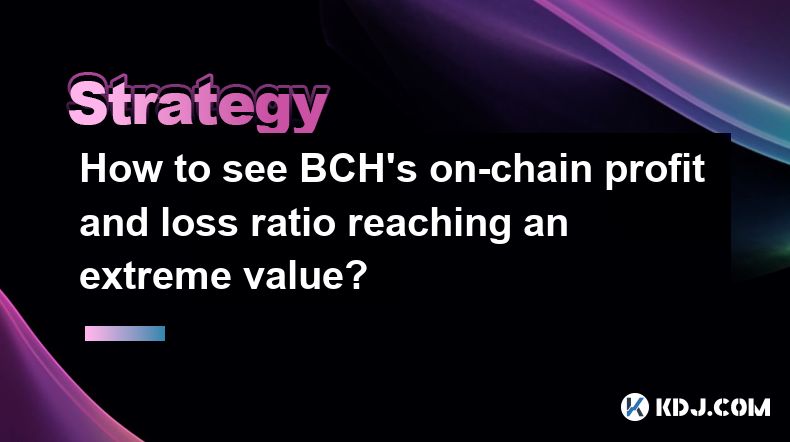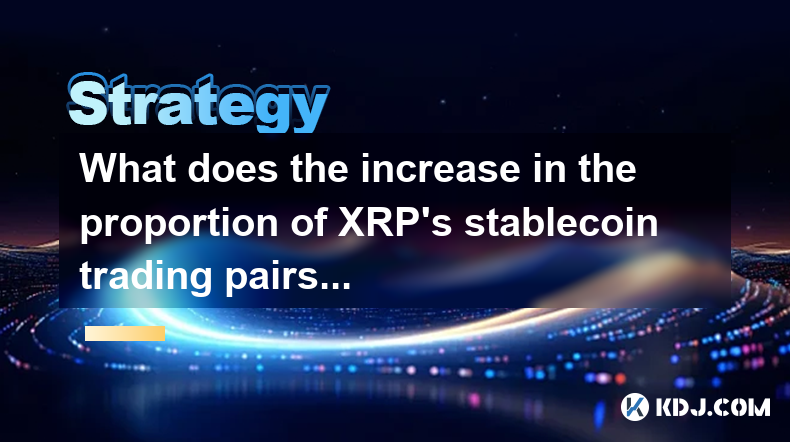-
 Bitcoin
Bitcoin $93,580.5822
5.99% -
 Ethereum
Ethereum $1,780.3758
12.27% -
 Tether USDt
Tether USDt $1.0000
0.02% -
 XRP
XRP $2.2336
7.45% -
 BNB
BNB $617.0092
2.58% -
 Solana
Solana $151.1010
8.49% -
 USDC
USDC $0.9998
-0.01% -
 Dogecoin
Dogecoin $0.1804
11.02% -
 Cardano
Cardano $0.6935
10.66% -
 TRON
TRON $0.2473
-0.16% -
 Chainlink
Chainlink $14.5597
11.46% -
 Sui
Sui $2.9078
29.47% -
 Avalanche
Avalanche $22.5900
14.68% -
 UNUS SED LEO
UNUS SED LEO $9.0735
-1.25% -
 Stellar
Stellar $0.2674
9.14% -
 Shiba Inu
Shiba Inu $0.0...01364
10.52% -
 Toncoin
Toncoin $3.1063
6.26% -
 Hedera
Hedera $0.1842
6.84% -
 Bitcoin Cash
Bitcoin Cash $361.7446
7.08% -
 Polkadot
Polkadot $4.0610
9.37% -
 Litecoin
Litecoin $83.8579
6.50% -
 Hyperliquid
Hyperliquid $18.8944
3.48% -
 Bitget Token
Bitget Token $4.6004
4.14% -
 Dai
Dai $0.9999
0.01% -
 Ethena USDe
Ethena USDe $0.9993
0.01% -
 Pi
Pi $0.6699
6.47% -
 Monero
Monero $227.1589
5.14% -
 Pepe
Pepe $0.0...09056
14.37% -
 Uniswap
Uniswap $5.9024
12.54% -
 Aptos
Aptos $5.2984
10.41%
Will XRP rise when the tokens of XRP's competitors rise?
XRP's price can rise with competitors like XLM or USDT if market sentiment is positive, but technological advancements and regulatory news also play crucial roles.
Apr 21, 2025 at 01:07 am

The question of whether XRP will rise when the tokens of its competitors rise is a complex one that requires an understanding of various factors within the cryptocurrency market. XRP, known as Ripple's native cryptocurrency, is often compared to other digital assets that serve similar purposes, such as facilitating cross-border payments and acting as a bridge currency. When the tokens of XRP's competitors, such as Stellar (XLM) or Tether (USDT), experience a rise in value, it can influence XRP's price in several ways.
Market Sentiment and Investor Behavior
One of the primary factors that can affect XRP's price in relation to its competitors is market sentiment. If investors see a rise in the value of competing tokens, they might perceive it as a positive signal for the entire sector. This can lead to increased interest and investment in similar cryptocurrencies, including XRP. For instance, if XLM experiences a significant price surge due to a new partnership or technological advancement, investors might start looking at other cryptocurrencies in the same niche, potentially driving up XRP's value.
However, the opposite can also occur. If investors believe that the rise of a competitor's token indicates a shift in market dynamics away from XRP, they might divest from XRP in favor of the rising competitor. This could result in a decrease in XRP's price, even as its competitors rise. Investor behavior is thus a crucial element in understanding the potential impact of competitors' token rises on XRP.
Technological Developments and Partnerships
Another important factor to consider is technological developments and partnerships. When a competitor like Stellar announces a new partnership or a significant technological upgrade, it can lead to a rise in their token's value. If XRP is perceived to be lagging behind in terms of technological advancements or partnerships, investors might shift their focus to the competitor, causing XRP's price to stagnate or decline.
Conversely, if XRP responds to a competitor's rise by announcing its own advancements or partnerships, it could counteract the negative effects and even lead to a rise in its own value. For example, if Ripple announces a new integration with a major financial institution following a rise in XLM's value, it could reassure investors and drive up XRP's price.
Market Dynamics and Liquidity
Market dynamics and liquidity also play a significant role in how XRP's price reacts to the rise of its competitors' tokens. If the cryptocurrency market as a whole is experiencing a bullish trend, a rise in one token can often lead to a rise in others, including XRP. This is because increased liquidity and trading volume in the market can create a domino effect, where the success of one token spills over to others.
However, if the market is experiencing high volatility or bearish trends, the rise of a competitor's token might not have the same positive impact on XRP. In such cases, investors might be more cautious, and the rise of one token might not be enough to lift others. Liquidity is thus a critical factor to consider when analyzing the potential impact of competitors' token rises on XRP.
Regulatory Environment
The regulatory environment can also influence how XRP's price reacts to the rise of its competitors' tokens. If a competitor's token experiences a rise due to favorable regulatory news, it might lead investors to believe that similar regulatory developments could benefit XRP as well. For instance, if a regulatory body approves a new use case for XLM, it might lead investors to speculate on similar approvals for XRP, potentially driving up its price.
On the other hand, if the regulatory environment is uncertain or unfavorable for XRP, the rise of a competitor's token might not translate into a rise for XRP. Investors might be more concerned about regulatory risks associated with XRP, leading them to favor the competitor's token instead.
Historical Performance and Market Correlations
Finally, historical performance and market correlations can provide insights into how XRP's price might react to the rise of its competitors' tokens. By analyzing past data, investors can identify patterns and correlations between XRP and its competitors. For example, if historical data shows that XRP tends to rise alongside XLM during bullish market conditions, investors might expect a similar outcome in the future.
However, it's important to note that past performance is not always indicative of future results. Market conditions, investor sentiment, and other factors can change, leading to different outcomes. Therefore, while historical data can provide valuable insights, it should be used in conjunction with other factors when predicting how XRP's price might react to the rise of its competitors' tokens.
Frequently Asked Questions
Q: Can XRP rise even if its competitors' tokens do not rise?
A: Yes, XRP can rise independently of its competitors' tokens. Factors such as new partnerships, technological advancements, or positive regulatory news specific to XRP can drive its price up, even if other tokens in the same niche do not experience similar rises.
Q: How does XRP's utility affect its price in relation to its competitors?
A: XRP's utility, particularly its role in facilitating cross-border payments and acting as a bridge currency, can significantly impact its price. If XRP's utility is perceived to be superior to that of its competitors, it might attract more investment and drive up its price, regardless of the performance of other tokens.
Q: What role do market makers play in the relationship between XRP and its competitors' tokens?
A: Market makers can influence the price dynamics between XRP and its competitors' tokens by providing liquidity and facilitating trades. If market makers are more active in trading XRP compared to its competitors, it might lead to increased liquidity and potentially higher prices for XRP, even if its competitors' tokens rise.
Q: How does the overall market cap of XRP's competitors affect its potential to rise?
A: The overall market cap of XRP's competitors can impact its potential to rise. If a competitor has a significantly larger market cap, it might attract more investor attention and capital, potentially limiting XRP's growth. Conversely, if XRP has a strong market cap relative to its competitors, it might be better positioned to rise alongside or even outperform them.
Disclaimer:info@kdj.com
The information provided is not trading advice. kdj.com does not assume any responsibility for any investments made based on the information provided in this article. Cryptocurrencies are highly volatile and it is highly recommended that you invest with caution after thorough research!
If you believe that the content used on this website infringes your copyright, please contact us immediately (info@kdj.com) and we will delete it promptly.
- Bitcoin (BTC) rose from Tuesday’s low of $88,000 to above $93,500 in Asian morning hours
- 2025-04-23 14:45:12
- 5 Best Free Cloud Mining Websites to Make Money Bitcoin and Dogecoin in 2025
- 2025-04-23 14:45:12
- MiL.k Partners with Galxe to Expand Network and Connect Korean Users to Global Web3 Ecosystem
- 2025-04-23 14:40:13
- Trump Media and Technology Group Ventures into the World of Finance
- 2025-04-23 14:40:13
- AI-Driven Token Projects Are Poised to Revolutionize the World of Finance by 2025
- 2025-04-23 14:35:13
- Cantor Fitzgerald, SoftBank, and Tether Team Up to Form a Bitcoin Investment Vehicle
- 2025-04-23 14:35:13
Related knowledge

Where can I find the current average holding cost of XRP in the market?
Apr 22,2025 at 11:00pm
Where can I find the current average holding cost of XRP in the market? Finding the current average holding cost of XRP in the market can be a challenging task, as this information is not readily available on most mainstream cryptocurrency platforms. However, there are several methods and resources that you can use to estimate this figure. In this artic...

Where is the short-term holding cost line of BCH?
Apr 23,2025 at 06:00am
The short-term holding cost line of Bitcoin Cash (BCH) is a crucial metric for traders and investors looking to understand the immediate market sentiment and potential price movements. This line represents the average cost at which BCH has been held for a short period, typically considered to be less than 30 days. By analyzing this metric, market partic...

Is BCH's UTXO age distribution useful for judging buying and selling points?
Apr 23,2025 at 02:07am
The concept of UTXO (Unspent Transaction Output) age distribution in Bitcoin Cash (BCH) can be a valuable tool for analyzing market trends and potentially identifying buying and selling points. UTXO age distribution refers to the age of unspent outputs in the blockchain, which can provide insights into the behavior of different types of investors and th...

Can BCH's PSAR indicator chase the rise when it turns from empty to long?
Apr 22,2025 at 10:35pm
The Parabolic Stop and Reverse (PSAR) indicator is a popular tool among traders in the cryptocurrency market, including those trading Bitcoin Cash (BCH). The PSAR indicator is designed to identify potential reversals in the price trend of an asset. When the PSAR indicator turns from empty to long, it suggests a potential bullish trend, prompting traders...

How to see BCH's on-chain profit and loss ratio reaching an extreme value?
Apr 23,2025 at 08:35am
Introduction to BCH On-Chain Profit and Loss RatioBitcoin Cash (BCH), a fork of Bitcoin, has its own ecosystem with a significant on-chain activity. One of the critical metrics to assess the health and sentiment of BCH is the on-chain profit and loss ratio. This ratio helps investors and analysts understand whether the majority of BCH holders are in pro...

What does the increase in the proportion of XRP's stablecoin trading pairs indicate?
Apr 23,2025 at 02:00am
The increase in the proportion of XRP's stablecoin trading pairs indicates a significant shift in the trading dynamics of XRP on cryptocurrency exchanges. This trend suggests several important factors at play within the XRP ecosystem and the broader crypto market. Let's delve deeper into what this increase signifies. Higher Liquidity and Trading VolumeT...

Where can I find the current average holding cost of XRP in the market?
Apr 22,2025 at 11:00pm
Where can I find the current average holding cost of XRP in the market? Finding the current average holding cost of XRP in the market can be a challenging task, as this information is not readily available on most mainstream cryptocurrency platforms. However, there are several methods and resources that you can use to estimate this figure. In this artic...

Where is the short-term holding cost line of BCH?
Apr 23,2025 at 06:00am
The short-term holding cost line of Bitcoin Cash (BCH) is a crucial metric for traders and investors looking to understand the immediate market sentiment and potential price movements. This line represents the average cost at which BCH has been held for a short period, typically considered to be less than 30 days. By analyzing this metric, market partic...

Is BCH's UTXO age distribution useful for judging buying and selling points?
Apr 23,2025 at 02:07am
The concept of UTXO (Unspent Transaction Output) age distribution in Bitcoin Cash (BCH) can be a valuable tool for analyzing market trends and potentially identifying buying and selling points. UTXO age distribution refers to the age of unspent outputs in the blockchain, which can provide insights into the behavior of different types of investors and th...

Can BCH's PSAR indicator chase the rise when it turns from empty to long?
Apr 22,2025 at 10:35pm
The Parabolic Stop and Reverse (PSAR) indicator is a popular tool among traders in the cryptocurrency market, including those trading Bitcoin Cash (BCH). The PSAR indicator is designed to identify potential reversals in the price trend of an asset. When the PSAR indicator turns from empty to long, it suggests a potential bullish trend, prompting traders...

How to see BCH's on-chain profit and loss ratio reaching an extreme value?
Apr 23,2025 at 08:35am
Introduction to BCH On-Chain Profit and Loss RatioBitcoin Cash (BCH), a fork of Bitcoin, has its own ecosystem with a significant on-chain activity. One of the critical metrics to assess the health and sentiment of BCH is the on-chain profit and loss ratio. This ratio helps investors and analysts understand whether the majority of BCH holders are in pro...

What does the increase in the proportion of XRP's stablecoin trading pairs indicate?
Apr 23,2025 at 02:00am
The increase in the proportion of XRP's stablecoin trading pairs indicates a significant shift in the trading dynamics of XRP on cryptocurrency exchanges. This trend suggests several important factors at play within the XRP ecosystem and the broader crypto market. Let's delve deeper into what this increase signifies. Higher Liquidity and Trading VolumeT...
See all articles
























































































